
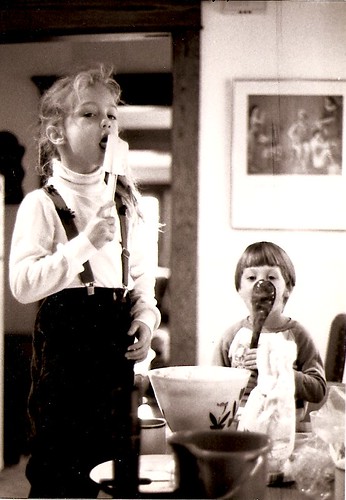
I was baking at a young age.
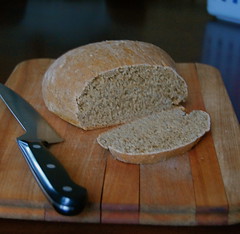
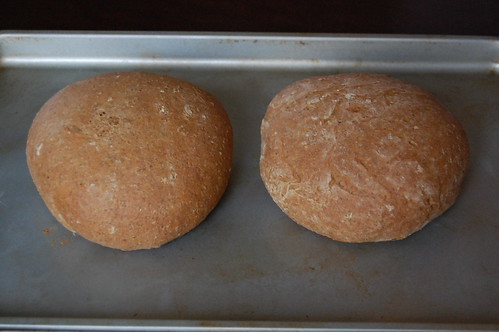
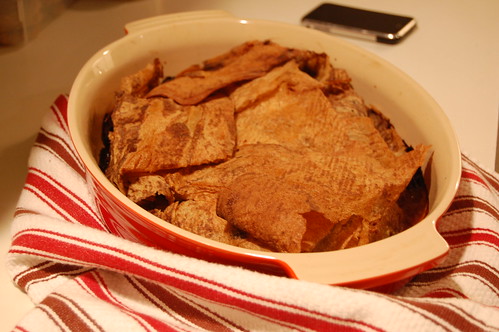 There is a chicken carcass simmering in a pot of water on my stove and my house smells wonderfully of burgeoning chicken stock. But the cause of this smell is something even more excellent and tasty - bread-wrapped roast chicken. This is a Palestinian dish found across the Levant called musakhan. Musakhan, which literally means "warmed," consists of chicken pieces and caramelized onions wrapped up in swaths of of flatbread and baked until the chicken falls off the bone and the bread absorbs all those good chicken juices.
There is a chicken carcass simmering in a pot of water on my stove and my house smells wonderfully of burgeoning chicken stock. But the cause of this smell is something even more excellent and tasty - bread-wrapped roast chicken. This is a Palestinian dish found across the Levant called musakhan. Musakhan, which literally means "warmed," consists of chicken pieces and caramelized onions wrapped up in swaths of of flatbread and baked until the chicken falls off the bone and the bread absorbs all those good chicken juices. You'll see many different versions of this across the Middle East, including fast food versions that include flatbread dough with onions and chicken baked on top. But the traditional version wraps the chicken in a kind of bread called marquq, a very thin flatbread made on a saj grill. A good Middle Eastern grocery will have marquq, but other thin flatbreads, like shraq or lavash will also work.
You'll see many different versions of this across the Middle East, including fast food versions that include flatbread dough with onions and chicken baked on top. But the traditional version wraps the chicken in a kind of bread called marquq, a very thin flatbread made on a saj grill. A good Middle Eastern grocery will have marquq, but other thin flatbreads, like shraq or lavash will also work. When I once described this dish to a friend, she exclaimed, "bread-wrapped roast chicken, that sounds like a dream!" And indeed, it is excellent. The bread, which is soft and full of chickeny juices on the bottom and crisp and crackly no top, the deep flavor of caramelized onions, the fleck of sumac, the tender meat. It's the sort of weeknight comfort food you can eat all week long.
When I once described this dish to a friend, she exclaimed, "bread-wrapped roast chicken, that sounds like a dream!" And indeed, it is excellent. The bread, which is soft and full of chickeny juices on the bottom and crisp and crackly no top, the deep flavor of caramelized onions, the fleck of sumac, the tender meat. It's the sort of weeknight comfort food you can eat all week long. 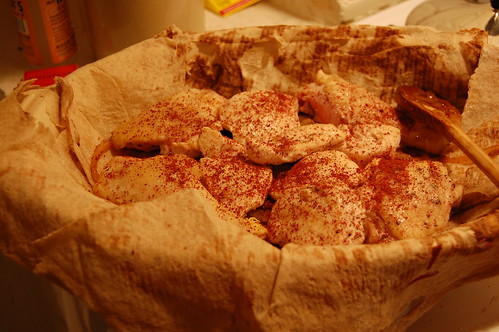 Musakhan
Musakhan
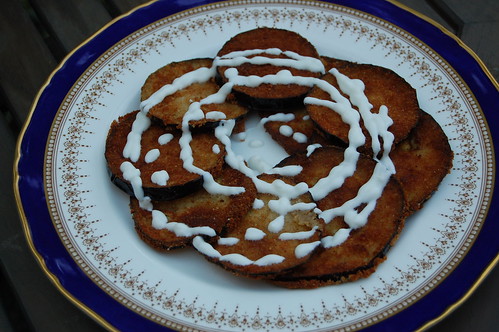
 I sold my mom's house a few weeks ago, and have a sudden feeling of homelessness. The house is mainly cleaned out, but I left mom's recipe cabinet for last. Everyone says how hard it must be to clean out mom's house, but frankly a lot of the stuff in there is just stuff to me. I'm not as attached to objects as some people. But the recipe cabinet is a different story.
I sold my mom's house a few weeks ago, and have a sudden feeling of homelessness. The house is mainly cleaned out, but I left mom's recipe cabinet for last. Everyone says how hard it must be to clean out mom's house, but frankly a lot of the stuff in there is just stuff to me. I'm not as attached to objects as some people. But the recipe cabinet is a different story. 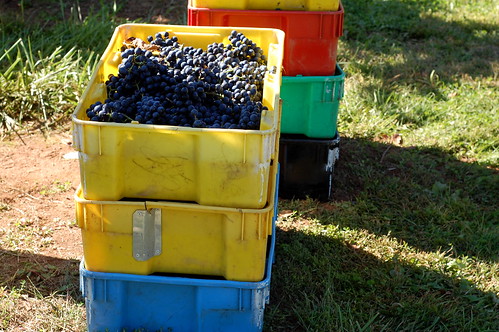 We went to Baltimore last weekend, to harvest grapes at a vineyard and stroll around the Walters and eat excellent Afghan food at the Helmand. We stayed with a friend Margaret, who is an excellent cook. When my mom was staying with her, she would often make this fried eggplant dish- they loved it so much the two of them would eat a whole eggplant in one sitting. I totally understand, this stuff is addictive. I made the recipe, simple pan-fried panko-crusted eggplant, for my last dinner party, and 3 whole eggplants were devoured in minutes. You could add some plain yogurt as an accoutrement, but this dish can really stand alone.
We went to Baltimore last weekend, to harvest grapes at a vineyard and stroll around the Walters and eat excellent Afghan food at the Helmand. We stayed with a friend Margaret, who is an excellent cook. When my mom was staying with her, she would often make this fried eggplant dish- they loved it so much the two of them would eat a whole eggplant in one sitting. I totally understand, this stuff is addictive. I made the recipe, simple pan-fried panko-crusted eggplant, for my last dinner party, and 3 whole eggplants were devoured in minutes. You could add some plain yogurt as an accoutrement, but this dish can really stand alone. Margaret's Eggplant
Margaret's Eggplant